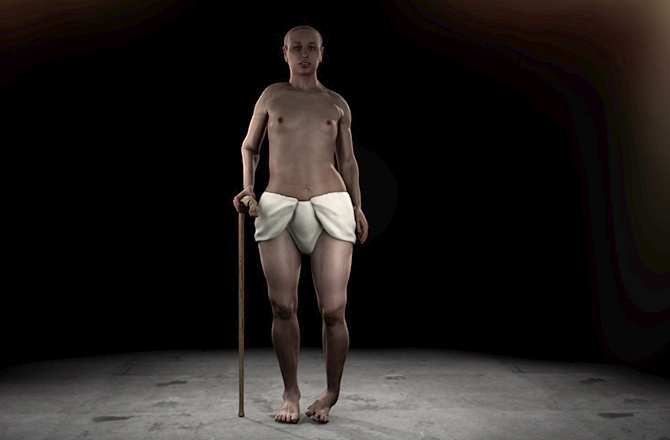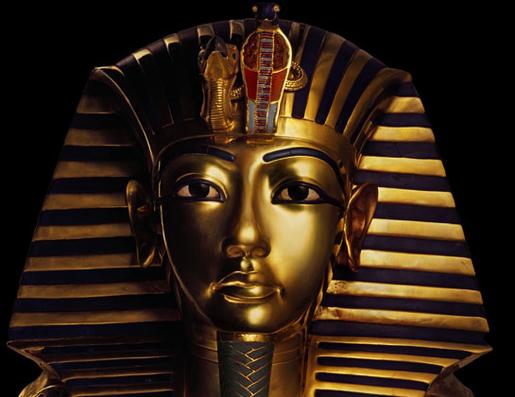
© STVA virtual reconstruction depicts King Tut at the time of death.
Tutankhamun's beautiful golden mask, the embodiment of a man secure in his power, has been flattering the pharaoh for many centuries, according to the most detailed image yet of the teenage king's face and body.
In the flesh, King Tut had a club foot, a pronounced overbite and girlish hips, says a "virtual autopsy" built using more than 2,000 computerized tomography (CT) scans of the pharaoh's body.Built for the BBC documentary,
Tutankhamun: the Truth Uncovered, the shocking 3-D computer model could shed new light on the death of the boy pharaoh at the age of 19.
Previous theories suggested King Tut may have died as a result of a chariot accident, but the virtual reconstruction showed a different scenario.
"It was important to look at his ability to ride on a chariot and we concluded it would not be possible for him, especially with his partially clubbed foot, as he was unable to stand unaided," Albert Zink, head of the Institute for Mummies and Icemen in Italy, told the U.K. daily
The Independent.
According to Ashraf Selim, an Egyptian radiologist, King Tut "also developed Kohler's disease or death of the bones, during adolescence, which would have been incredibly painful."
Indeed, about 130 walking sticks found in King Tut's treasure-packed tomb would support the theory that the boy pharaoh had to rely on canes to get around.
Zink believes the pharaoh's early death was most likely caused from his weakened state - a result of genetic impairments inherited from his parents, who were siblings.
Indeed, in 2010 an international genetic study produced a five-generation pedigree of Tutankhamun's immediate lineage. In the study, the mummy known as KV55 - most likely the "heretic" Akhenaten - and KV35YL, also known as the Younger Lady, were identified as siblings, as well as King Tut's parents.
The study confirmed the frail king was afflicted by malaria and suffered a badly broken leg, above his knee, just before he died.
"It is difficult to say whether malaria may have been a serious factor in the cause of death," Zink said.

© Rossella Lorenzi/Semmel ConcertsKing Tut's Mask
The boy pharaoh has been puzzling scientists ever since his mummy and treasure-packed tomb were discovered on Nov. 22, 1922, in the Valley of the Kings by British archaeologist Howard Carter.
Only a few facts about his life are known. Tut.ankh.Amun, "the living image of Amun," ascended the throne in 1332 B.C., at the age of 9, and reigned until his death at 19.
As the last male in the family, his death ended the 18th dynasty - probably the greatest of the Egyptian royal families - and gave way to military rulers.
King Tut's mask the long term goal.